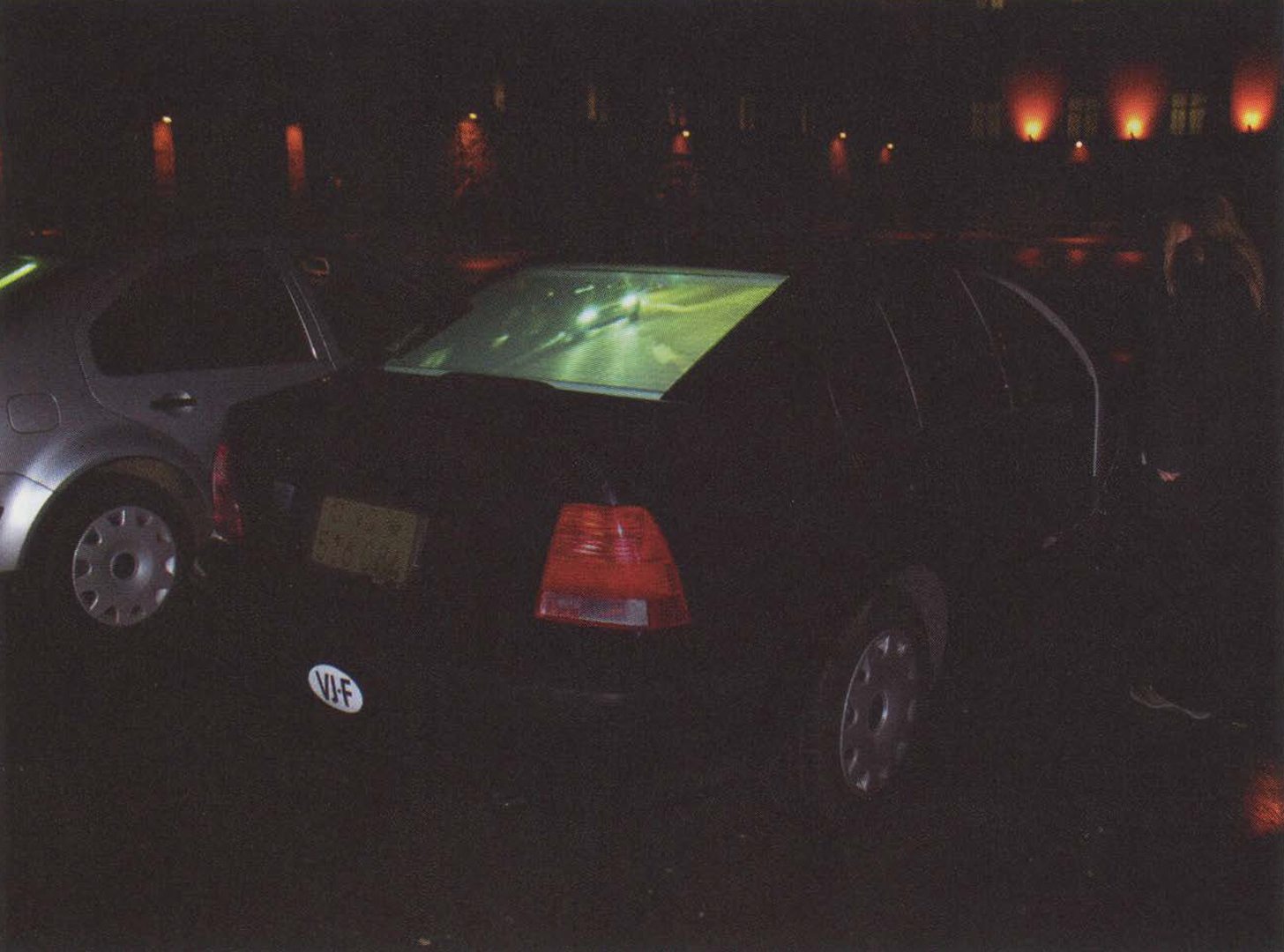Julie Andreyev: VJ Fleet [redux]
Artist(s):
Collaborators:
Title:
- VJ Fleet [redux]
Exhibition:
Creation Year:
- 2006
Medium:
- Mobile audio and video performance using cars
Category:
Artist Statement:
VJ Fleet [redux] is informed by interactive media from popular culture (specifically custom car and club sub-cultures) and performance art, experimental music, video projection, and interactive installations. By combining the mobility of the car with audio, video and interactive components, that which is private (the interior space of the car) becomes public and a tool for visual commentary about the city and its use. Aspects of the host city’s specific car culture are highlighted through the choice of cars for the fleet, and by custom “styling” (vinyl labeling) on the car exteriors.
The fleet drives through the city, recording, manipulating, and projecting video imagery of the route, which is loosely determined by local participants and drivers who have knowledge of the city’s highlights. The cars are set up with sensors and software that allow interaction between the car and driver to create live effects on the videos, which are projected on panoramic screens in the cars and made visible to people in the street.
Audio aspects of the city, and from the engine and passenger areas of the cars, are recorded for use when the cars stop at determined locations. Here, the cars are arranged to display the video archive of the drive, and the audio is manipulated by software into a new musical soundscape that is played on the cars’ audio systems. In this performance, cars can be perceived as recalling the drive to the location through the narrative of the videos and the expression of the sound. Other cars in the immediate vicinity receive the broadcast on their stereos. The cars’ projected videos are synced into a new panoramic response to the music. The effect is a live vehicular performance of remixed audio and visualizations of the city and its publics, and the private (now social) spaces of the cars.
Technical Information:
Three cars are each fitted with: sensors that read acceleration, braking, turning, and weight-shifting connected to an iCube and a laptop; a video camera that provides a view out the front or side windows; a contact microphone in the engine compartment and a lavalier microphone in the passenger area that sends inputs to a digital audio recorder; a video projector and screen on the rear windshield; and custom-cut removable vinyl decals to style the cars.
Digital information about the driver’s actions is sent via icube to a Max/Jitter software patch that manipulates the video feed from the camera. This manipulated video is projected on the rear screen and recorded by the software patch. The audio of the passengers and crew talking, and of local music played over the car audio system, is recorded via the lavalier microphone. The audio of the car and of the outside environment is recorded via the engine compartment microphone.
When the cars are stopped, the route’s recorded sensor data is read by a custom Max/MSP patch and applied to the recorded audio samples to create a new soundscape and played via FM broadcaster through the cars’ stereo systems. A custom Max/Jitter patch remixes the route’s recorded video to aspects of the sensor data and projects a new panorama on the cars’ back screens.





